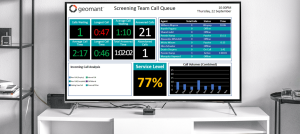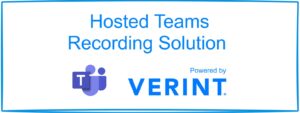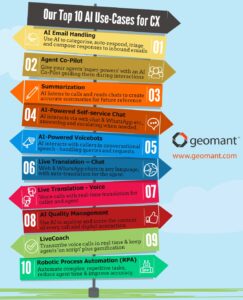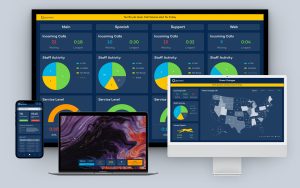The agent dashboard is one of the most important tools in the contact center. In today’s fast-paced and diverse business world, the right dashboard ensures employees can stay up to date with the information they need to boost their productivity and performance.
However, while connecting your agents to the right metrics, insights, and notifications can boost their efficiency, overwhelming them with too much of the wrong information can have the opposite results. With limited time to track essential details, agents need dashboards that offer quick, convenient, and optimized access to vital information.
The question is, how do you set up an agent desktop to cultivate success?
Examining the Data on an Agent Dashboard
Agent dashboards provide employees with an insightful overview of the performance management information they need, organized into one convenient space. The right tools can not only support positive customer interactions, but also help them to manage their schedules more efficiently and keep up with their to-do lists.
The challenge can be how the dashboard exists within the layout of the agent screen. Most agents are navigating through a large amount of information on their desktop.
This information includes:
- Customer details: Crucial customer information collected from the CRM system, such as a customer’s name, address, and contact number, presented when a call comes in.
- Journey analytics: Insights into the customer’s experience with the business so far, their sentiment levels, and their overall satisfaction with the service.
- Presence information: Status details for other essential team members to help agents determine which employees they can reach out to for collaborative support.
- Crucial metrics: Personal metrics on performance levels, NPS and CSAT score, and other important details relevant to keeping the agent motivated and engaged.
- Gamification elements: Leader boards and tracking systems show agents where they stand compared to the rest of the team in terms of performance.
- Notifications: Real-time relevant notifications about the business, product performance, or any potential issues the company might be facing.
Unfortunately, many companies make the mistake of including too much irrelevant information on the agents’ screen, prompting a state of “information overwhelm.” When agents are overloaded with too much data, they stop being able to leverage their dashboards effectively.
Additionally, agents can feel stressed out if performance metrics are figured too prominently. Many companies request that HR or Employee communications information be made available by default, but then alerts can be activated and displayed only if a priority action is required.
How to Optimize the Agent’s Screen
Today’s innovative wallboards and agent dashboard tools provide companies with endless freedom to customize their technology to suit the needs of each agent. This ensures businesses can get the correct data to each agent, depending on their specific needs. To optimize the agent’s screen effectively, business leaders should consider the following:
- Agent location: Agents within the contact center may need different information from those working remotely. Omit any irrelevant information. For instance, in-office agents may need to know about traffic issues that might affect their commute times while at-home agents do not.
- The Agent setup: Think about how your agent will work. What kind of systems will they be leveraging consistently from within the desktop or dashboard? What kind of integrations are available to give your agent an all-in-one environment?
- Critical data: Different agents and employees need access to different kinds of information to optimize their performance. A call center agent may need to track their average handling time consistently but only check their NPS score occasionally.
- Dashboard design: How can you make the agent desktop as easy to navigate and straightforward as possible for your agent? Can you present data within a smaller footprint? Can visuals and graphics offer faster insights into data than streamed statistics? Can you color-code different messages?
- Personalization Options: Sometimes, allowing your agents to personalize their desktops can be helpful. Allowing teams to hide information they don’t find useful or place it in a separate tab can reduce the risk of information overwhelm.
After considering these key components, business leaders should also remember that the information and data agents need to access in the contact center can evolve. Regularly assessing the efficacy of the agent screen and determining how it can be improved can lead to better employee experiences, improved productivity, and reduced turnover.
Give your Agents the Screens They Need
An agent screen is a crucial tool in any contact center and an important factor in optimizing both agent and customer experience.
If agents are overwhelmed with too much information, they can’t track the data they need. If employees don’t have enough insights, their performance levels may suffer. Work with Geomant today to find out how to create the optimal agent screen for your employees.











